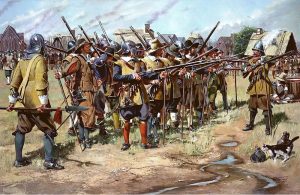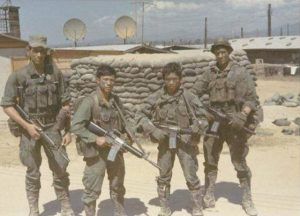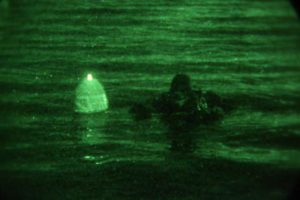
Unless a person has paid essentially no attention to any news for the last twenty years, strident complaints and warnings about the abysmal state of basic infrastructure in the United States is nearly impossible to avoid.
Highways, local roads, bridges, railroads – the arteries that carry both commerce and the work force, both inter- and intrastate – are in terrible condition. The situation has become critical enough, that it has noticeably slowed the velocity of the supply chain, compounding the impacts of both the COVID-19 pandemic, as well as the grounding of the MV Ever Given container ship in 2021.
Critically, failures in the railroad network caused by favoring profiteering over operational efficiency – one of the few examples of actual failure in deregulation policies – are leading to staff cuts of up to twenty-nine percent, while the mileage of operating rail track has steadily decreased, even though per-mile profits rise.

This is a toxic situation, as the imbalance between railroads and over-the-road (OTR) trucking continues to grow. Even given the inefficiencies inherent in OTR vs Rail (as freight trains commonly haul between 200 and 300 intermodal containers, or dedicated freight cars, allowing a crew of three or four to do the work of 200 or more people), slowdowns caused by poor infrastructure increasingly impact the economy…
All of this has been known for decades, although it is little remarked about in the mainstream press, unless there is some major newsworthy nugget to titillate the audience…That said – what does this have to do with a critical strategic threat to the United States? What does this have to do with security and defense, aside from the obvious logistics advantages?
A recent YouTube video by the channel “Real Life Lore” (YouTube link) pointed out that the Continental United States, i.e., the “Lower 48”, is uniquely blessed with a unique terrain that practically guarantees global economic dominance to anyone who can control this territory. This has, in fact, been the reason for the meteoric rise of the United States over the course of the last one hundred and thirty-odd years.

The driving engine behind this geological and geographical system lays in the facts that, first, no major agricultural or manufacturing center in the Lower 48 is further than 150 miles (240km) from a navigable waterway. East of the Rocky Mountains, the majority of navigable waterways feed into the Mississippi River system (which is itself navigable all the way to Minneapolis-St. Paul, Minnesota), which then flows south, to the port of New Orleans.
From there, the Intracoastal Waterway chain of barrier islands provides a near contiguous navigable seaway, for almost the entire length of the US coast, from Brownsville, Texas, to Virginia, and from there, to the Hudson River, which connects to the Great Lakes, all with little exposure to open sea conditions. No other continent has this precise mix of features. And, as water transport is anywhere from ten to thirty times more efficient than any other type of transport, the titanic economic advantages are obvious.
However – there is a catch: Vidalia, Louisiana.
Most readers will have never heard of Vidalia. This is not surprising, as it is a tiny town of barely 4,300 people, even though it is the seat of Concordia Parish. Vidalia, however, is home to perhaps the single-most critical point of physical security in the world:
The Old River Control Structure.
Completed by the US Army Corps of Engineers in 1963, the Old River Control Structure was built to prevent the Mississippi River from diverting its course into the Atchafalaya River. The Mississippi River’s tends to wander over time. For the entire existence of the United States as a nation, the Mississippi followed (more or less) its current course. As a result, the city of New Orleans – and its seaport – was built and expanded into the critical complex that it is today. Indeed, it was a pivotal point in the War of 1812, in a battle that launched the career of a future President, and later formed a cornerstone of Federal strategy in the Civil War.

In 1953, however, the Corps of Engineers concluded that the Mississippi was beginning to shift its course again, and that if left unchecked, it would divert into the Atchafalaya Basin by 1990. Thus, they launched the Old River Control Structure project at their predicted point of divergence at Vidalia, as the result of such a diversion would be catastrophic, as the Mississippi river would quickly and violently carve a new channel and river delta complex, emptying into the Gulf of Mexico some sixty miles to the west of New Orleans, an even that would leave both New Orleans and the Louisiana state capital of Baton Rouge not simply ‘high and dry’, but would leave both major cities without a source of fresh water.
Aside from the catastrophic environmental impact on the United States and major cities along the river’s route –as well as the significant impact on the strategic military system of the US in the Lower 48 – the impact on the economy of the United States would almost certainly lead to another “Great Depression”, virtually overnight, an economic contagion that would almost certainly crash the world’s economy, as the United States’ economic system is not designed to flow “upriver”.
The Corps of Engineers did a fantastic job on the control project; the only significant natural threat to the structure was the Mississippi flood of 1973, with damaged the structure to a degree.

But now, we live in the world of the early 21st Century, and “lateral thinking” about security has to be taken into account…Specifically, the “Poor Man’s Nuclear Weapon”.
On April 16, 1947, an explosion in the port of Texas City, Texas mostly vaporized the SS Grandcamp, formerly, the SS Benjamin R. Curtis, a Liberty Ship built during World War 2 and later gifted to France to help rebuild that country’s merchant marine. The ship had been loaded with approximately 2,300 tons of ammonium nitrate – used in fertilizer or explosives – as well as small mounts of other cargo. The explosion leveled nearly 1,000 buildings within 2,000 feet of the explosion, killing at least 560 people (including all but one of the town’s 28-man volunteer fire department) and injuring more than 5,000 people, almost 1,800 of whom were admitted to area hospitals. Some 63 people were unidentifiable, and were buried in a memorial cemetery; an additional 113 people were declared “missing”, because no identifiable parts could be found. The Grandcamp’s 2-ton anchor was hurled over 1.5 miles, digging itself into a 10-ft deep crater, while one of her propellers was thrown 2 miles inland. More than 1,100 vehicles, 360 rail freight cars and 500 homes were damaged; 10 miles away, in the city of Galveston, half the windows in town were shattered. All told, damages totaled between $1,000,000,000 and $4,500,000,000, in 2019 dollars.

Then, on August 4, 2020, an estimated 2,750 tons of ammonium nitrate fertilizer – confiscated from an impounded ship nearly a decade before – detonated in a gargantuan explosion. The blast – estimated as equal to 1.1 kilotons of TNT – killed at least 218 people, injured over 7,000, and left nearly 300,000 people homeless.

Such a blast would critically damage the Old River Control Structure; two or three, should they happen simultaneously, would certainly destroy it outright. Neither ships, nor ammonium nitrate, are hard to come by. And they are not, comparatively, all that expensive. Both are within easy reach of many “extra-national hostile groups”. And the MV Rhosus, the ship at the center of the Beirut blast story, would have been capable of transiting for most of the Mississippi’s length…
…And yet, there are no real security measures in Vidalia that would prevent an American version of the St. Nazaire Raid.
Someone should really look into this.
Really.








